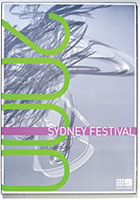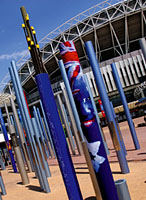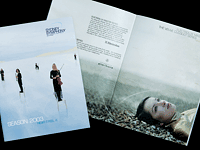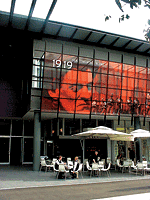Evaluating success
The success of a graphic design is evaluated in relation to the criteria established by the client and the design brief. Often this success will relate to increased sales or recognition.
"The best thing is that a client can call you up and say I'm really pleased with this job. Whether they email you and say, I've just got the brochure and it's fantastic. Or they'll pick it up and because you're using different printing techniques, it might have a tactile feel, and they get off on it and they say, this is fantastic! and they can't wait to show it to someone else. Then you've done what you've set out to do. You've made a little bit of a difference there and you've communicated something."
Ray talks about what makes a design successful.
"A successful design is when you really understand your client's brief ? applying your knowledge and skills and creating something unique.
Design is about expressing a feeling, communicating in a broad sense to many different people and understanding how that might be done. "
 |
Sustainability
As a designer it is important to consider the short term and long term consequences of a design. For graphic design this will often relate to the impact of the materials used to convey a message.
"Environmental sustainability in design is always quite a big question. There was a time where all you could use was recycled papers because there was a big international push to make clients aware. We didn't want to mill long-standing forests. It needed to be sustainable. You wouldn't use particular types of ink. And now that some of that is actually second nature, you've educated your client and they just come to expect that. Whether it's paper, or whether it's a material, we look at what its impact is in the environment.
Some of our 3-dimensional projects have a huge impact. You're building something and you're sticking it in a place where many people might walk past. Are they going to walk into it and hurt themselves or is it going to last? Do your paints give off the wrong types of fumes? We have projects where you have to address all of those issues and a lot depends on the will of the client as well. Some projects have to be very sustainable and very green and you have to take a lot more care in finding sustainable solutions. The printing industry uses lots of paper so that's always a big issue. You have solvent-based inks and natural-based inks. Where you can, you use natural-based inks. The printers themselves are quite aware of those parts of the process as well. "
 |
My career
Ray has worked on a wide mix of exciting projects such as Sydney Festival, Sydney Symphony and the Olympics Arts Festival. He often gets to work with people from all over the world and enjoys the challenge of a job that is always exciting and forever changing. He also enjoys occasional travel for his work like going to Hong Kong to meet with clients. One of the benefits of being a designer is that you get to meet creative people like artists, filmmakers, photographers and architects who are doing inspirational things.
"The thing I find most rewarding about working in this industry is you get to meet lots of different people in lots of different fields. If you're inquisitive, that can be great. You learn a lot about many different facets of life. You meet some remarkable people that are actually doing some outstanding things. It's like being able to touch just a little bit of their life and being able to understand how they think or how they do something. You couldn't get that from many other occupations. We come to work and are actually enthused by that. We enjoy coming here to create something. It's something that is going to be, hopefully, remarkable, or make a difference, or someone's going to take notice. That creative bit, that artist part, you're going on exhibition, that's cool. We have great studio people, we have a great environment, we listen to music ? how could you not enjoy coming to work."
 |



